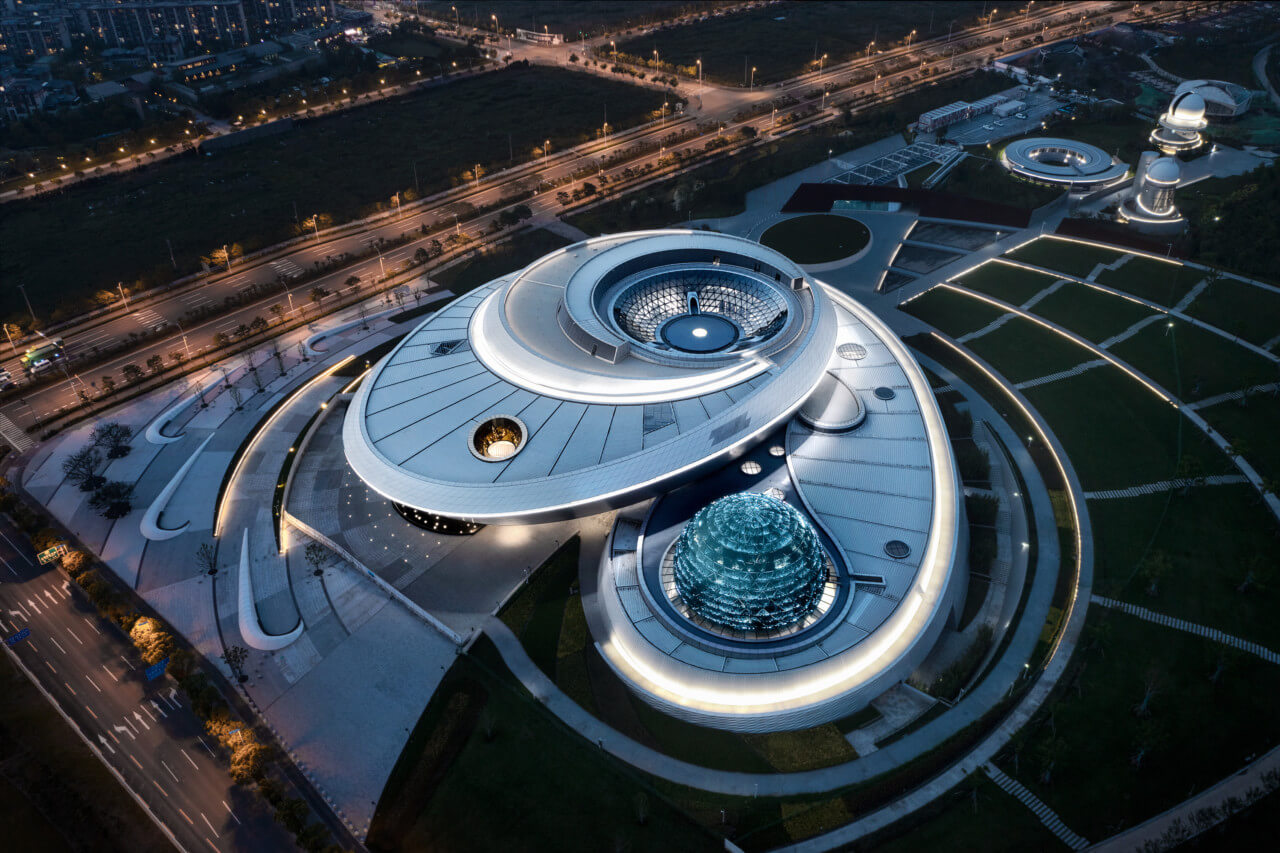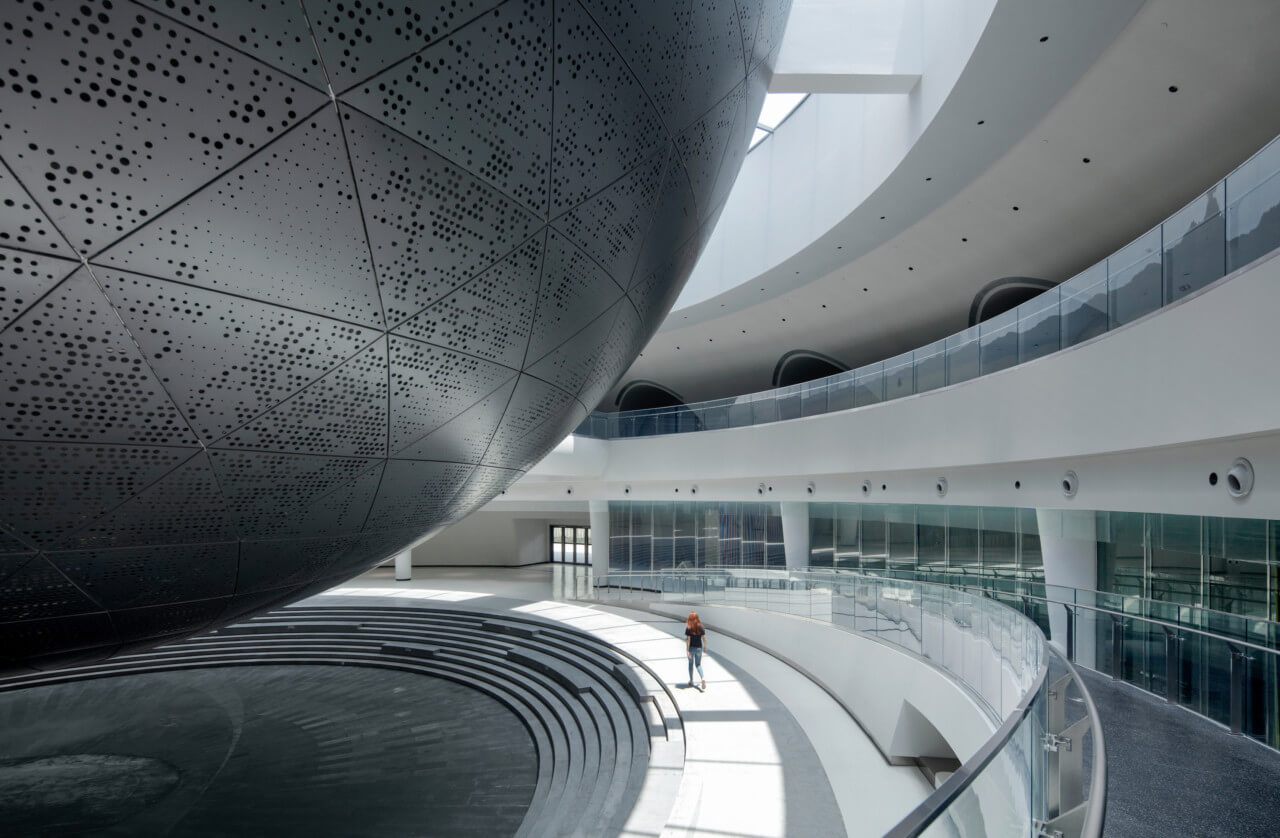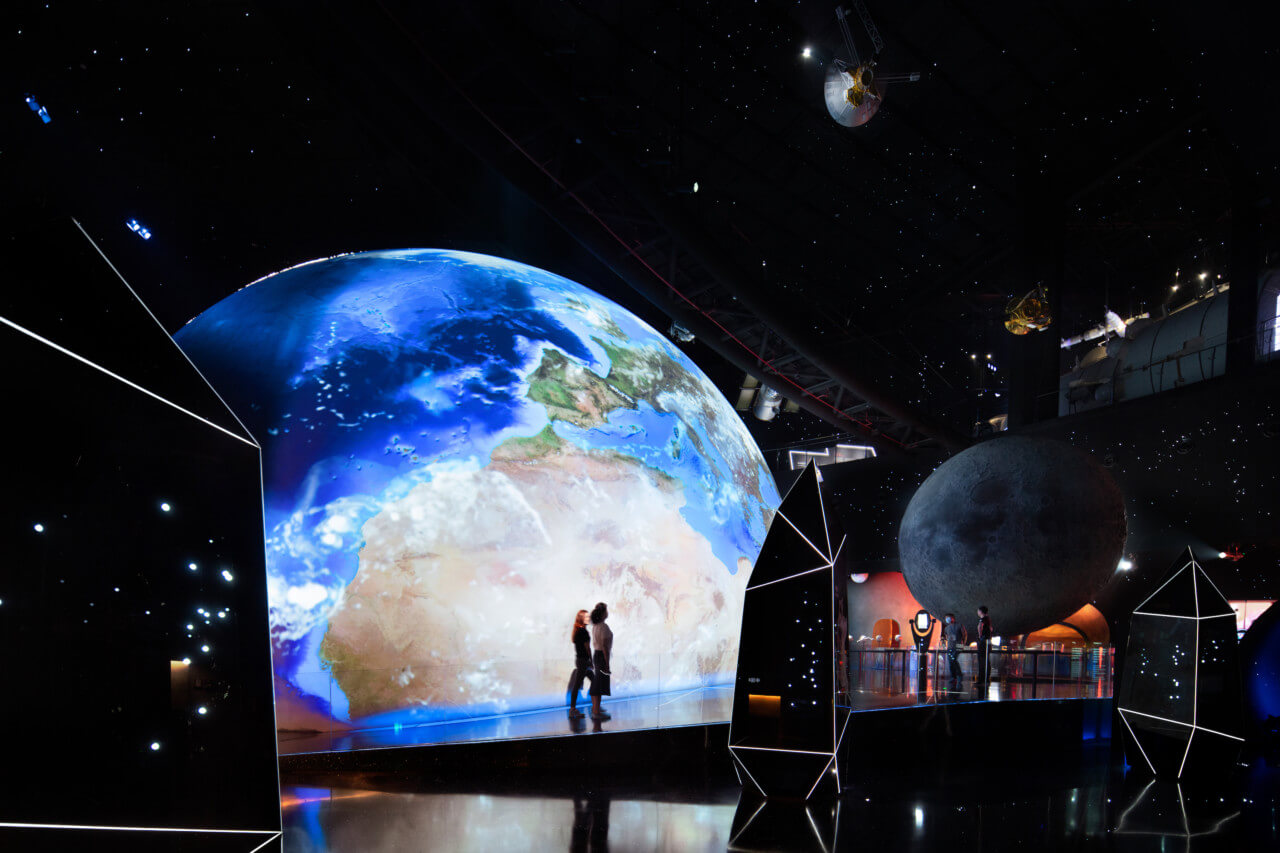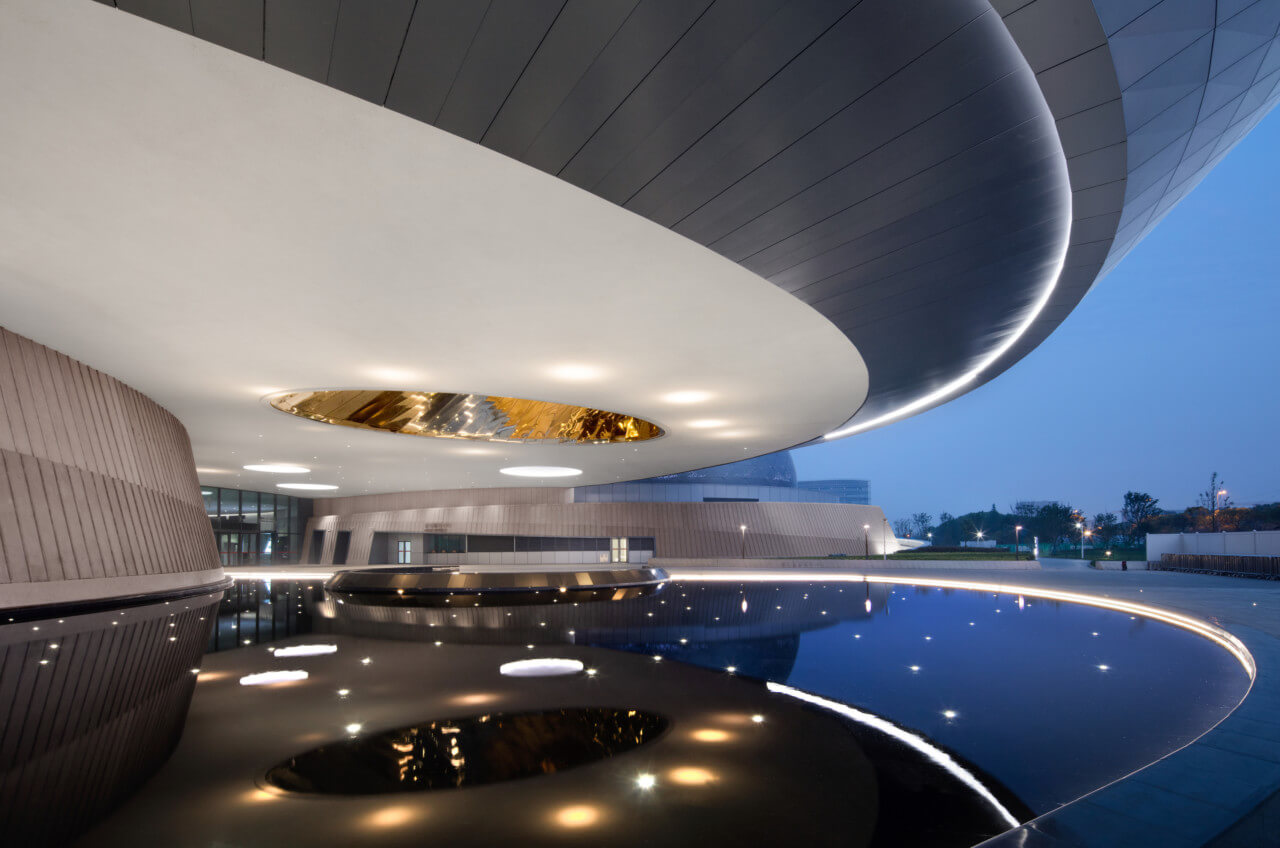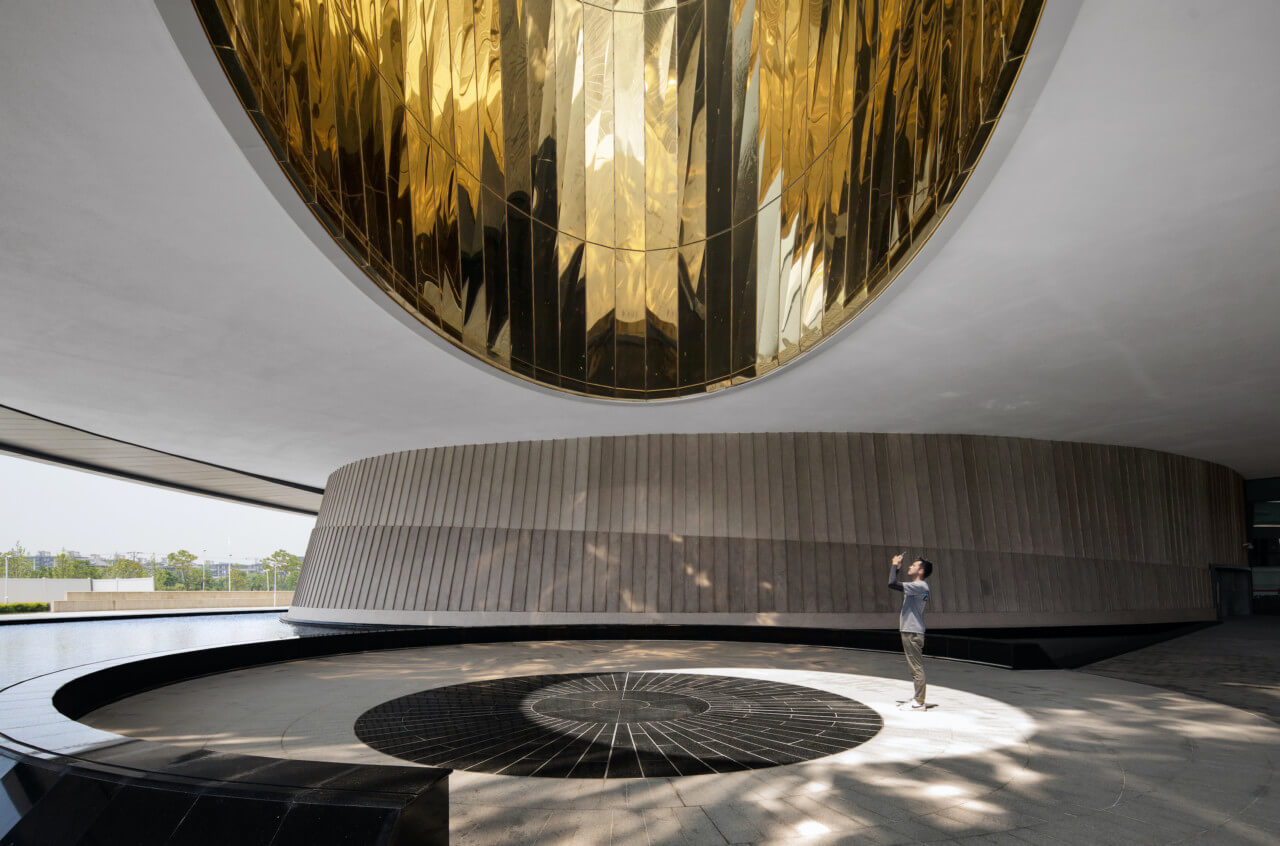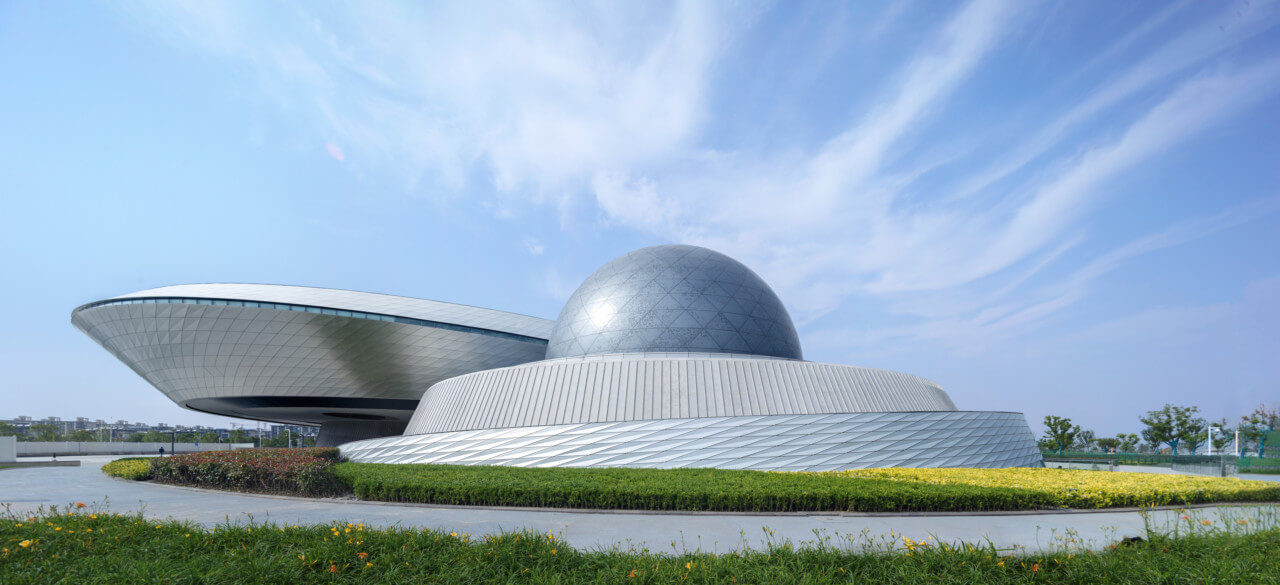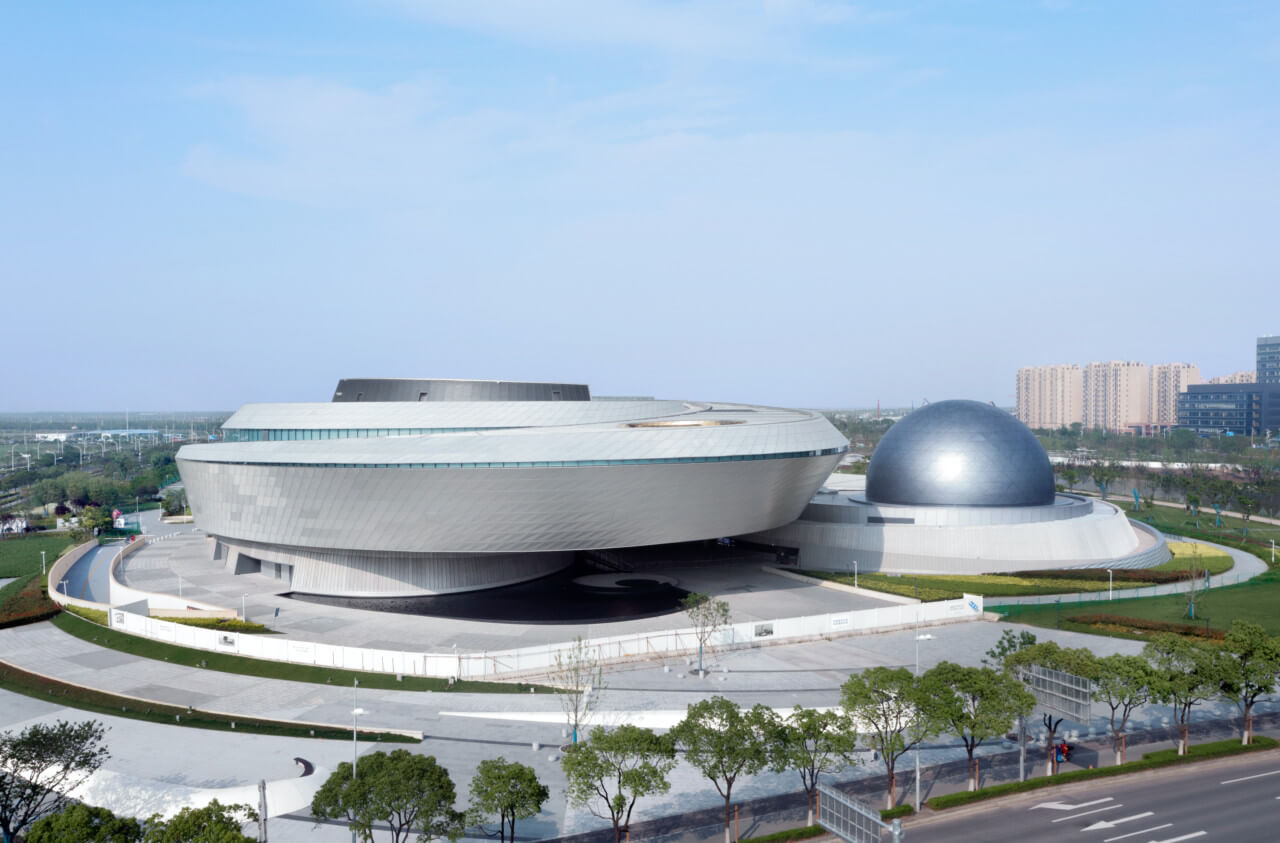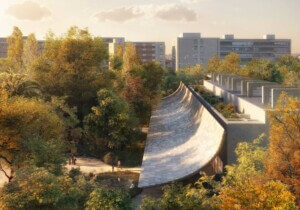Ennead Architects has unveiled its completed Shanghai Astronomy Museum, the celestial object-focused new branch of the landmark Shanghai Science and Technology Museum in the city’s Pudong district. (The Perkins&Will-designed Shanghai Natural History Museum at Jing’an Sculpture Park is the museum’s other main satellite location.) Spanning 420,000 square feet, the expansive facility, which opens to the public on July 18, is the largest astronomy (only) museum in the world.
As detailed by the firm, which opened its Shanghai-based office in 2014 and was tapped for the project a year later, the building uses scale, form, and the manipulation of light to “heighten awareness of our fundamental relationship to the sun and the earth’s orbital motion.” Notably, the design of the structure features nary a straight line or right angle, to reflect “the geometry of the universe and the dynamic energy of celestial movement.”
“In making this building, we wanted to create a place where the institutional mission is fully enmeshed with an architecture that itself is teaching, and finds form in some of the fundamental principles that shape our universe,” explained Thomas J. Wong, design partner at Ennead Architects, in a statement. Leading the project, which broke ground in November 2016, alongside Wong was Ennead management partner, V. Guy Maxwell.

“The big idea of the Shanghai Astronomy Museum was to infuse a visceral experience of the subject matter into the design, and to deliver that before you even enter the building,” added Wong. “And at the end of your visit, there is this culminating moment directly with the sky, which is framed and supported by the architecture.”
As further detailed by the firm, Wong was inspired by the “three-body problem in physics” and looked to “the intricate choreographies created by gravitational attraction of multiple bodies within solar systems.” The resulting structure features a spiraling facade and a building envelope that “traces a series of arcing paths that are visibly influenced by gravitational pull: the heart of the central atrium, the forward momentum at the entry, and the planet-like sphere that envelopes the planetarium theater.”
Featuring exhibits and interactive elements divided into three thematic areas (“Home,” “Cosmos,” and “Odyssey”), the museum is defined by a trio of core architectural components that pull double-duty as functional astronomical instruments that track the sun, moon, and stars: The Oculus, the Inverted Dome, and the Sphere.
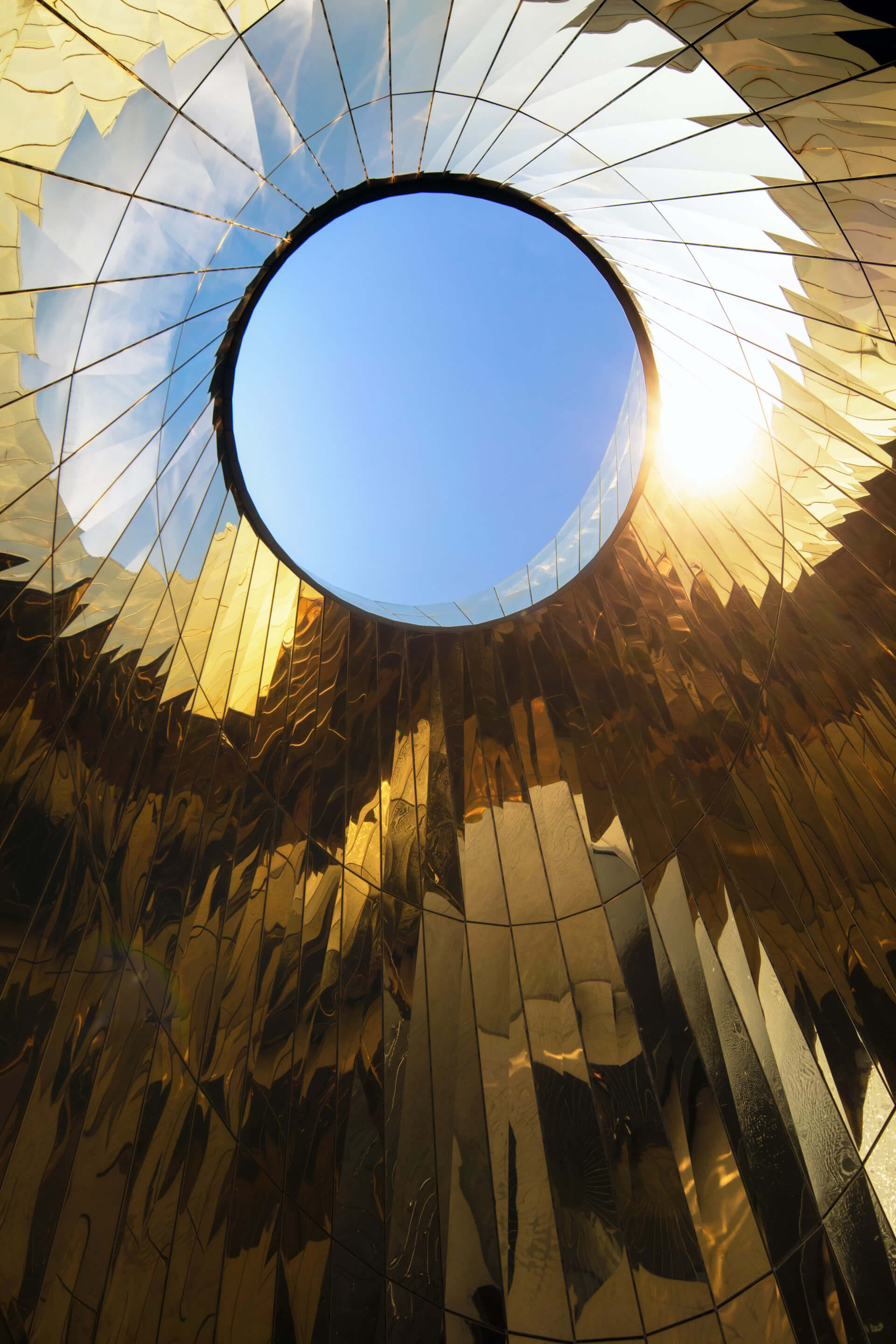
Suspended directly above the museum’s main entry point, the Oculus creates a “veritable time piece” by tracking a circle of sunlight on the ground opposite the museum’s entry plaza and reflecting pool. “At noon during the summer solstice, there is a full circle, which aligns with a circular platform within the Museum’s entry plaza,” explained Ennead.
Situated at the building’s roofline above the central atrium and the 720-degree spiraling ramp, the Inverted Dome takes the form of an inverted glass tension structure where visitors can congregate and crane their necks upwards to enjoy unobstructed views of the heavens above. As noted by the firm, “the culmination of the exhibit journey, this space cuts the view of the horizon and adjacent urban context and focuses the visitor on the all-encompassing sky—a real encounter with the universe to conclude the simulated experience within.”
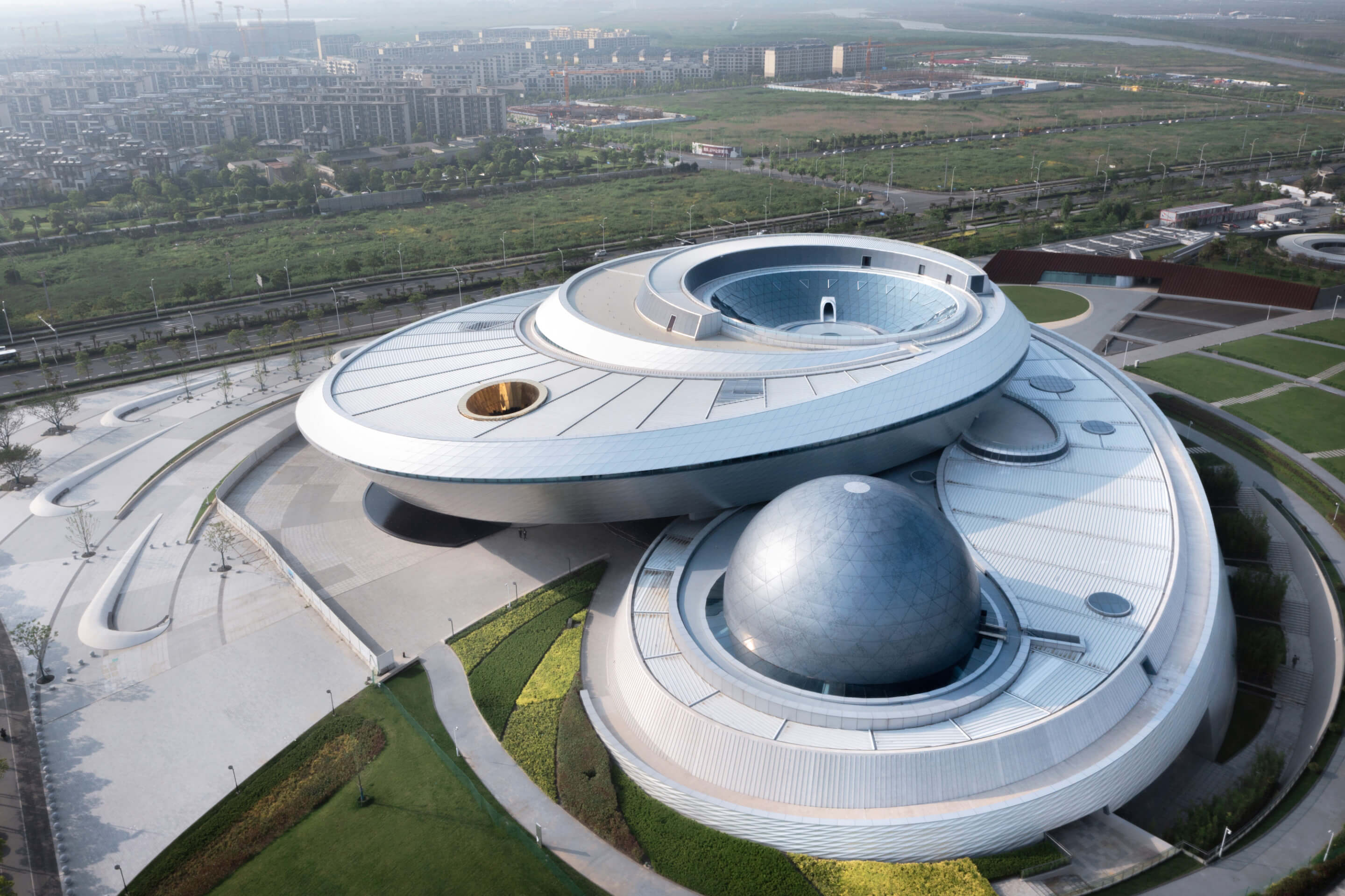
Finally, the Sphere, instantly reminiscent of Ennead’s Hayden Sphere at the Rose Center for Earth and Space at the American Museum of Natural History in New York, is home to the museum’s half-submerged planetarium theater. “The Sphere derives its shape not only from the requirements of the programmatic element it contains, but as an abstract manifestation of a primary celestial form” explained Ennead. “Embedded in the roof plane of the lower Museum wing, as if rising out of the Earth-bound horizon, the sphere gradually emerges into view as one rounds the building, the drama unfolding as though one were approaching a planet from one of its moons, allowing visitors to experience it as a weightless mass from below.”
Other major programming elements and buildings located at the Shanghai Astronomy Museum’s park-like campus in the Nanhui New City (formerly the Lingang New City), a booming free trade zone southeast of the central business district, include: A crowd-drawing range of temporary and permanent exhibits, a 78-foot solar telescope, an observatory, an optical planetarium, an education and research center, and Digital Sky Theater. Per Ennead, the museum’s programming will showcase “immersive environments, artifacts and instruments of space exploration, and educational exhibitry.”
While the Shanghai Astronomy Museum officially opens to the public later this month, some guests have already toured the vast space during a preview run. One early visitor told the Global Times that she was “overwhelmed” by the museum’s augmented and virtual reality-heavy exhibitions because “the demonstrations of astronomy are so realistic.”






